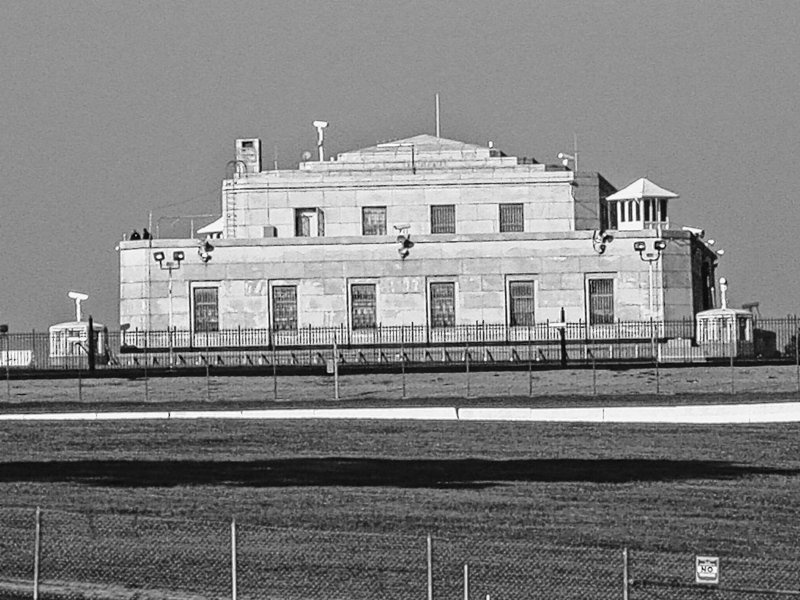With the United States poised to slam into its debt limit today, conservative economists are eyeballing all that gold in Fort Knox. There’s about 147 million ounces of gold parked in the legendary vault. Gold is selling at nearly $1,500 an ounce. That’s many billions of dollars in bullion.
“Given the high price it is now, and the tremendous debt problem we now have, by all means, sell at the peak,” said Ron Utt, a senior fellow at the Heritage Foundation.
But members of the Obama administration don’t agree.
“It would be bad for the taxpayers. It would be bad for the markets,” said Mary Miller, Treasury’s assistant secretary for financial markets.
If assets are sold off, the United States should sell them in an orderly, “well-telegraphed” manner, Miller said, not in a “fire sale” atmosphere.
Another senior administration official, not authorized to speak for attribution, spoke more bluntly: “Selling off the gold is just one level of crazy away from selling Mount Rushmore.”
The United States may have run up a huge debt, but it is not a poor country. The federal government owns roughly 650 million acres of land, close to a third of the nation’s total land mass. Plus a million buildings. Plus electrical utilities like the Tennessee Valley Authority. And the Interstate Highway System.
Economists of a conservative or libertarian bent have long argued that the federal government needs to get out of certain businesses, unload unneeded assets and privatize such functions as passenger rail service and air traffic control. No one advocates selling Yellowstone, but why, some economists ask, should the federal government be in the electricity business?
Economist Kevin Hassett of the American Enterprise Institute said the federal government should consider the sale of interstate highways. Motorists would have to pay tolls to the private owners, he said, but the roads would likely be in better shape. Federal, state and local governments could raise hundreds of billions of dollars through highway privatization, he said.
“Many of the world’s roads were originally built as toll roads, so it would hardly be revolutionary to return to that model,” Hassett said.
The Heritage Foundation on Tuesday released a plan for balancing the budget that did not include tax increases, but did include a proposal to sell $260 billion in federal assets over 15 years. The plan does not specify the assets. It refers to “partial sales of federal properties, real estate, mineral rights, the electromagnetic spectrum, and energy-generation facilities.”
“We’re not going to say we’re going to sell off the Smithsonian and the Capitol. We would not propose that anyway,” said Alison Fraser, head of the Economic Policy Studies department at Heritage.
The Heritage group chose not to mention the Fort Knox gold when it included asset sales in the budget plan. Fraser said the group didn’t want to be “sidetracked” into a debate with the people who think the country should return to the gold standard.
The administration recently did a rough calculation of the nation’s gold reserves, including the stash at Kentucky’s Fort Knox (technically, it’s in the U.S. Bullion Depository) and concluded it was worth about $370 billion.
The country does not use the gold for anything, but Treasury officials believe that selling it could create the impression of desperation, and thereby rattle the markets.
A sudden gold sale would also postpone only briefly — two or three months, perhaps — the deadline for raising the debt limit.
“It’s merely a procrastination technique. It would throw markets into turmoil, and you’d have to accept fire-sale prices,” said the senior administration official.
But some economists want to liberate the bullion.
“Why not?” asks Chris Edwards, director of tax policy studies at the libertarian Cato Institute. “I think it shows that the government is getting serious about reforming itself.”
The debt limit, or debt ceiling, is set by Congress as the maximum debt the government can carry. Congress last raised the limit in February 2010, to just under $14.3 trillion (including money the Treasury owes to government trust funds, such as Social Security).
The Treasury Department projects that the limit will be reached today, but that shifting money among different accounts can keep the government flush until Aug. 2.
The Obama administration has said that it needs to borrow an average of $125 billion a month to keep paying its bills and meeting its legal obligations.
Although raising the debt limit has historically been viewed as a noxious necessity — to fail to do so would raise the specter of the government defaulting — Republicans in Congress have insisted that any increase this time be tied to long-term spending cuts.
But even approaching the debt-limit deadline can spook investors, Treasury officials say, and if investors become worried about the United States’ ability to pay off its debts, they’ll demand higher interest rates before buying Treasury notes.
Fraser of Heritage fired back: “What’s going to spook the markets is not doing anything about the budget trajectory we’re on.”
Copy the Story Link
Send questions/comments to the editors.



Success. Please wait for the page to reload. If the page does not reload within 5 seconds, please refresh the page.
Enter your email and password to access comments.
Hi, to comment on stories you must . This profile is in addition to your subscription and website login.
Already have a commenting profile? .
Invalid username/password.
Please check your email to confirm and complete your registration.
Only subscribers are eligible to post comments. Please subscribe or login first for digital access. Here’s why.
Use the form below to reset your password. When you've submitted your account email, we will send an email with a reset code.